Artist Zak Ové: Stamping Caribbean identity through mas
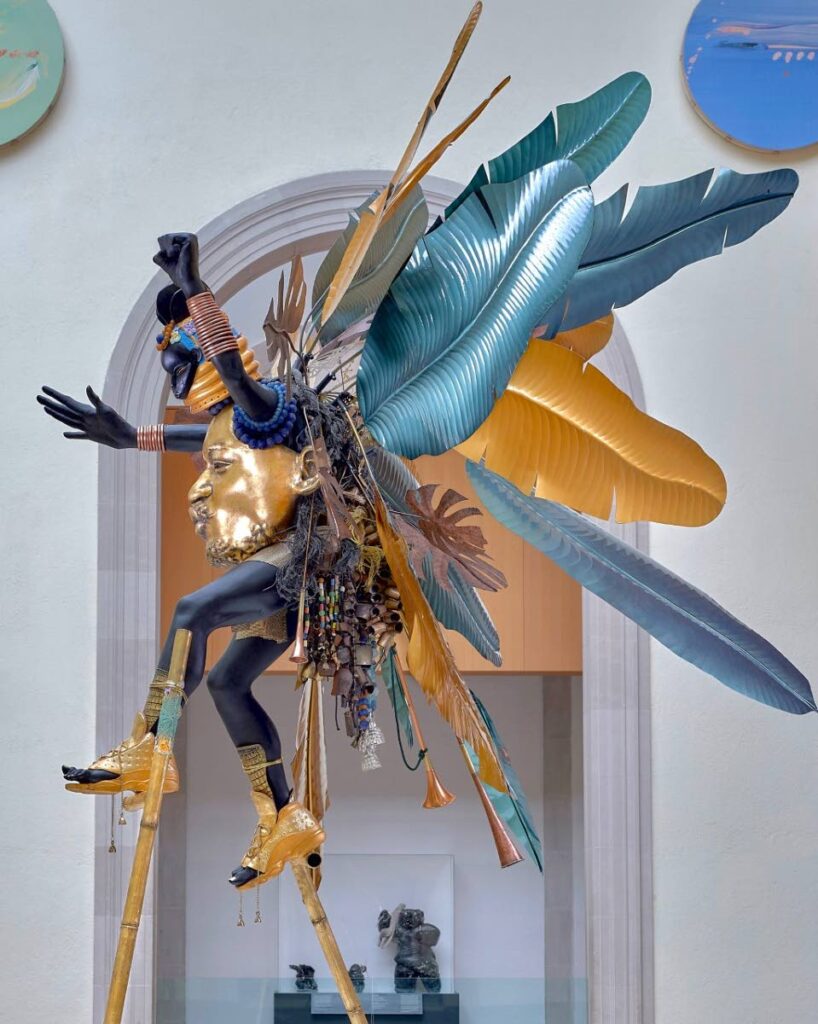
To visual artist Zak Ové, Carnival is a fascinating example of multiculturalism and mas is a very important artistic medium that has not been taken seriously enough.
He believes mas needs to be acknowledged as an artform as it speaks to millions of people globally.
“To me, it’s really important to understand how masquerade can work as a tool of emancipation, how transfigurement through costume really helps one to excel and understand who one really is in a deeper sense. There’s no end to the lessons, philosophies and ideologies, artistically, I’ve taken from Carnival and I’ve tried to put back into my work.”
His latest piece, Moko Jumbie 2021, has done just that.
Commissioned by Art Gallery Ontario, the sculpture is 25 feet high. The human figure is about seven feet tall with enlarged hands and feet and a golden-coloured breastplate with the face of a young male masquerader. It is cast in fibreglass with graphite-coloured spray paint, with wings eight feet high, made of aluminium sheets and coated with two-toned paint.
The stilts are steel scaffold poles made to look like bamboo, and the figure’s shoes are size 17 Nike Air Jordans with the toes cut off to look like “washikongs” that are too small for the owner, as Ové remembered seeing as a child in TT.
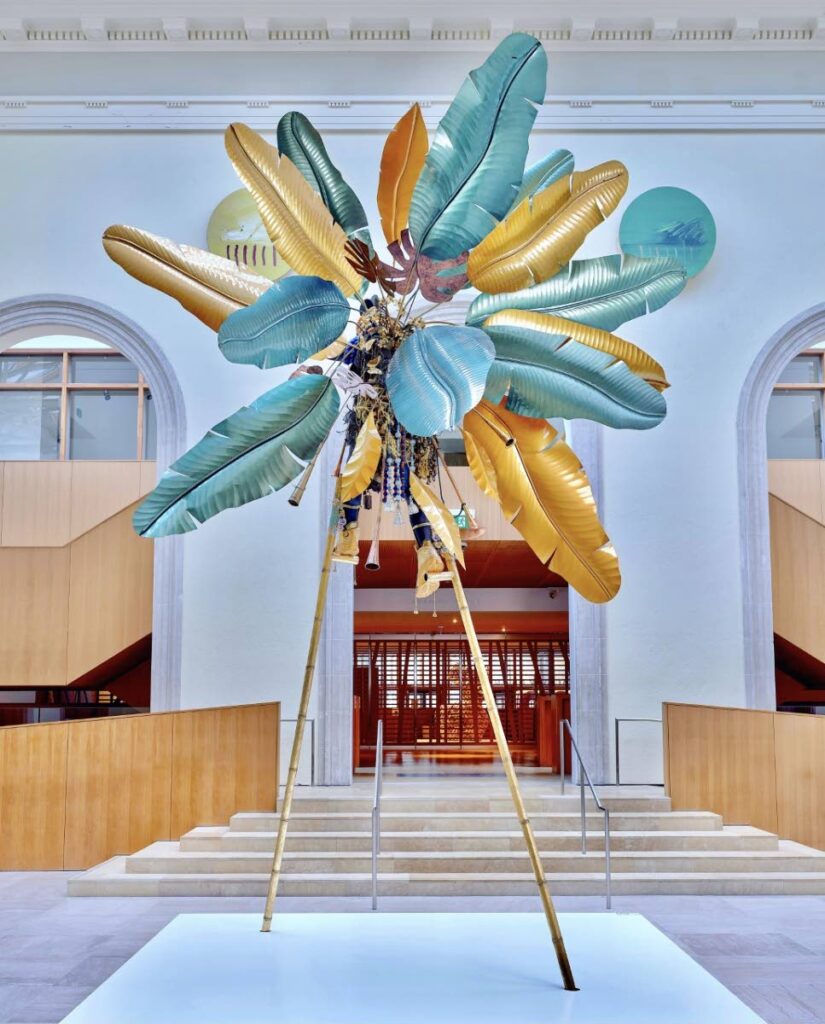
“I was interested in the multiplicity of the character as spirit as well as in flesh, and how one can composite that within the design of the work.
“It’s a fusion of New World materials that can then be used to speak about old-world values in a traditional masquerade. When you infuse into any old-world tradition, whether is masquerade or African statue or mask-making, with New World materials, it reopens a contemporary dialogue into what the pieces are, how they have been made, and who it speaks to in that moment.”
Ové told Sunday Newsday he had previously made two moko jumbies which are now part of the permanent collection at the Sainsbury African Galleries of the British Museum. The work was commissioned to speak about the relationship between Africa and the Caribbean, and he is excited that those “deities” get to be at home and be a part of their original communities.
He chose the moko jumbie as a representation of the Caribbean because it is a powerful part of mas across the Caribbean as well as in the UK, US, and Canada.
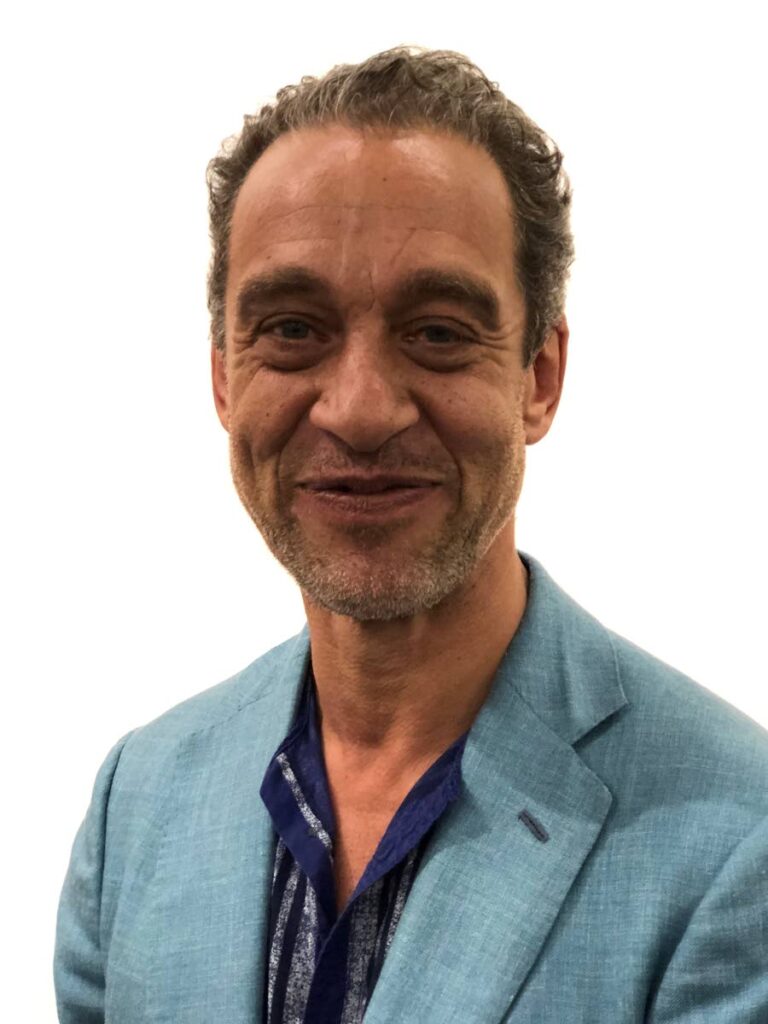
“I think the story of the moko jumbie wading across the sea from West Africa has always been relevant to the story of mas and to the story of Trinidad. So for me, it was a fitting piece to speak about the Caribbean’s relationship, in this case, to Canada.”
He said Julie Crooks, head of the department of Arts of Global Africa and the Diaspora at the Art Gallery of Ontario, asked for a moko jumbie after seeing the two at the British Museum. He felt it would be fitting for the audience in Canada as part of the permanent collection, and it now sits in the front entry of the gallery.
“It’s always a big adulation and a big responsibility when somebody asks me to make a work to speak about the Caribbean in context in that way. If anything, you’re spurred to do your best work in that moment, because a lot of people are looking. You have to acknowledge the power and impact of what that might feel like for people of the Caribbean to come and see that.
“Ensuring that the flag flies high is always my primary concern in the sense of how the work looks and feels. It’s very scary. But I think that’s why it’s always important that we get to tell our own stories, because of the family and social responsibility connected to them.”
Born in London to acclaimed Trinidadian filmmaker Horace Ové and Irish immigrant Mary Irvine, Ové, 55, graduated with a BA in film as fine art from Central St Martin's School of Art in 1987.
His work is heavily influenced by his frequent visits to TT to see his family for Carnival and summer vacations. He also worked with his father documenting calypsonians and masmakers, including Peter Minshall and his 1983 band River and the Mighty Shadow.
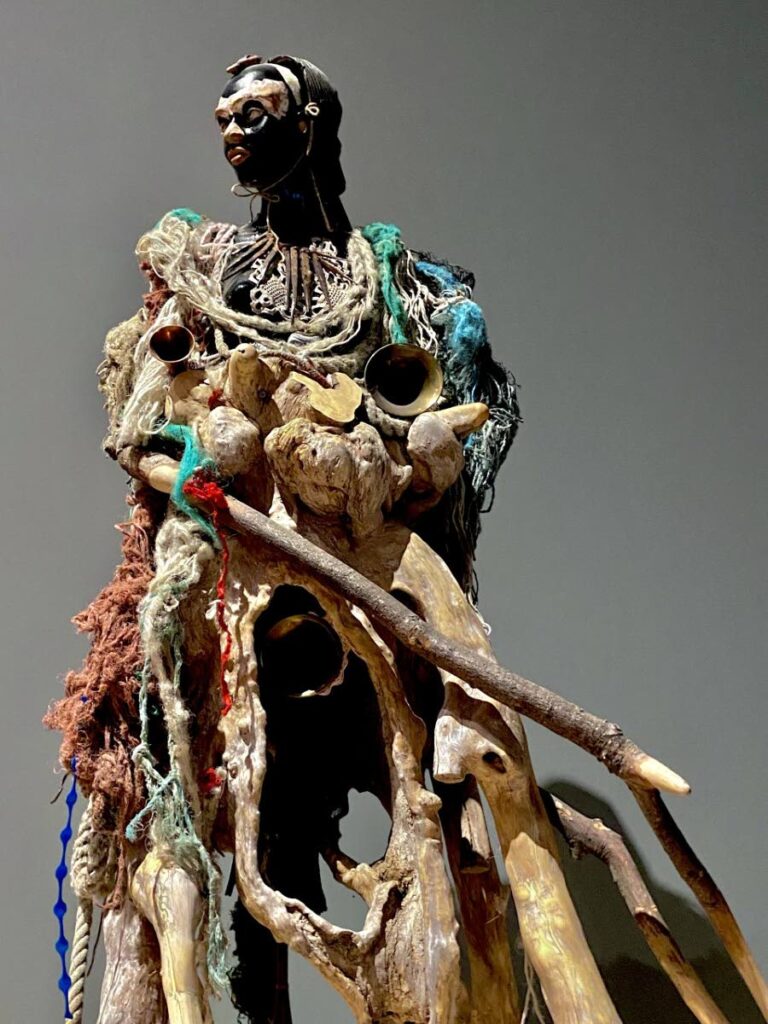
Later, he directed music videos for several Jamaican dancehall artists including Patra, Monie Love, and Chaka Demus and Pliers. He also did TV commercials for bmobile, Fernandes rum and others in the 90s. But he always had a fascination with mas, as evidenced by his and his father's being involved in London’s Carnival since its establishment.
“I spent years documenting ole mas – year after year, back and forth – to really involve myself in that, to understand what that was, and to grow from that. Interestingly, that’s where I found an interest in making sculptures.
“Before that, I’d been working in film and I came back to Trinidad to document ole mas in particular but, infectiously, it left me wanting to make things, which is why I then came back to Trinidad and did the residency with CCA7 (the now-defunct Caribbean Contemporary Arts) in 2007.”
He expressed pride in the way TT has taken Carnival, a sign of the country’s independence, and exported it as the pinnacle of Caribbean culture so that it spread throughout the world, influencing all types of communities.
Ové said he would like to continue “fleshing out” more traditional mas characters, and did so in an unexpected way in his solo exhibition Canboulay, which was held at De Buck Gallery in New York from October 21-November 20.
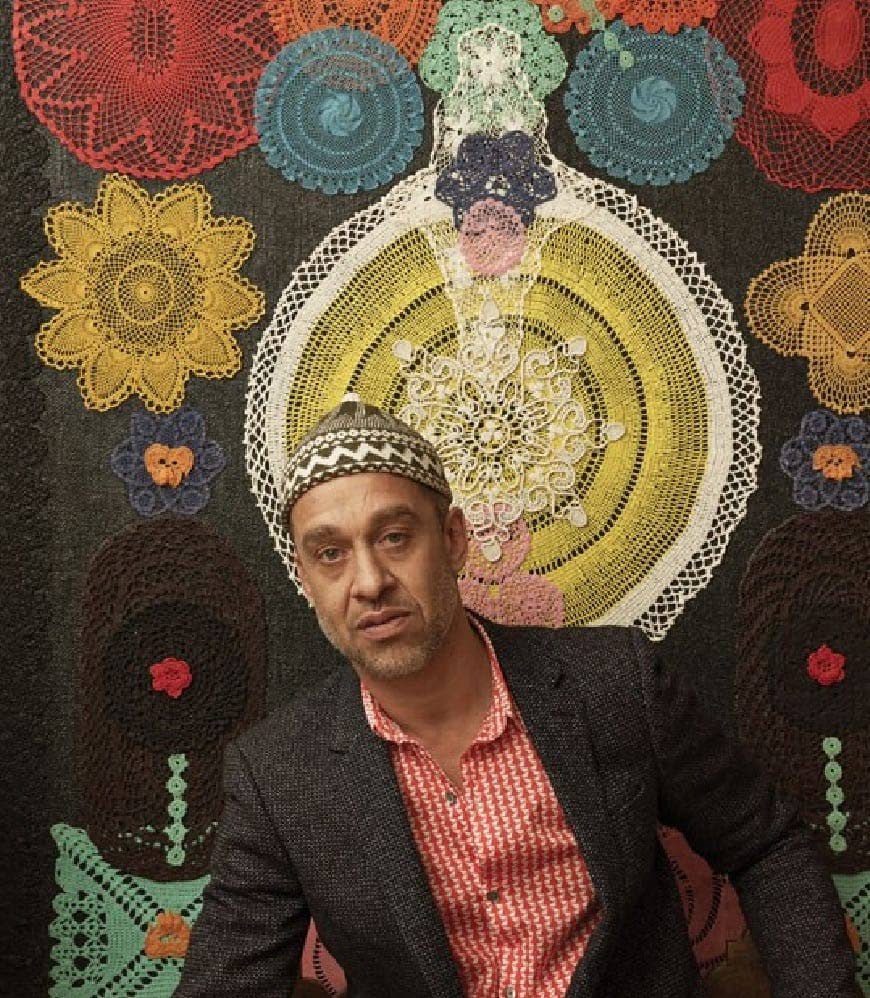
With pieces titled J’Ouvert, Fancy Sailor, Burrokeet, Baby Doll, Blue Devil, Pierrot Grenade and other mas characters, he used vintage crochet doilies to construct them.
He said his aunt’s house was “covered” in doilies, which were, in turn, covered in plastic. He was interested in how doilies and crochet were used in families as a motivator by mothers who wanted to make the space "classy," and the way it can bind a family.
“To me, it was quite interesting to use pieces like that en masse, where suddenly it’s a barrage, whereas traditionally I’d see one under a cup or a vase.”
He has also contributed to the Living Between Islands exhibition at Tate Britain in London, where all the artists in the show spent some time working in TT. His piece is the “La Jablesse” (La Diablesse) made out of a tree stump.
He said culturally TT is an amazing point of focus because of its freedom as well as the history and traditions of its artistic culture. It is also attractive because of its “cultural density” in the modern world, and to those searching for lost identity through the migration of prior generations.
He is currently working on projects for the Museum of Contemporary African Diasporan Arts in Brooklyn.
Ové is also busy in his personal life, as he has a two-and-a-half-year-old child, another due at the end of January, and he recently moved from London to Gran Canaria, Spain.
“That’s been really interesting, because Gran Canaria has a lot of historic connections to Trinidad in terms of its relationship with (Christopher) Columbus, and also with Carnival. It’s the home of what was exported to Trinidad as Carnival, and I was shocked to see how many traditions in their Carnival here that we have there, like powder mas, stickfighting and all kinds of strange phenomena.”


Comments
"Artist Zak Ové: Stamping Caribbean identity through mas"